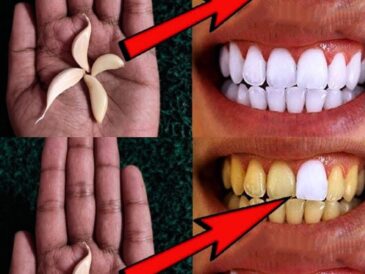Cultivating strong, resilient pepper seedlings is one of the most rewarding aspects of gardening. The seedling stage is foundational—get it right, and you set the stage for a bountiful harvest. Get it wrong, and you may face a growing season full of setbacks. Among the most critical factors in early plant success is root development. A robust root system is what allows pepper plants to thrive, resist stress, and produce abundantly.
In this comprehensive guide, we will explore everything you need to know about growing strong pepper seedlings, with a focus on nurturing healthy root systems through optimal care and a simple but effective nutrient feeding regimen. This guide is ideal for beginners and seasoned gardeners alike who want to maximize the performance of their pepper plants.
Chapter 1: Why Root Development Is the Foundation of a Great Pepper Harvest
The Role of Roots in Pepper Seedlings
Roots are far more than anchors for the plant. In fact, they’re the lifeline of the entire organism. They absorb water, uptake nutrients, and interact with the soil microbiome. In peppers, which are somewhat sensitive and slow growers in their early stages, the health of the root system will directly influence the size, quality, and quantity of the eventual fruit.
Pepper seedlings with well-established roots are more tolerant of drought, pests, and disease. These plants grow faster, flower earlier, and often yield larger, sweeter, and more nutritious peppers. Weak roots, on the other hand, lead to leggy, pale, and stressed plants that are slow to recover from transplant shock and may never reach their full potential.
Chapter 2: The Ideal Growing Conditions for Strong Seedlings
Before introducing nutrients, it’s essential to create the right environment. Seedlings are vulnerable and need consistent, gentle care.
Light: Essential for Healthy, Compact Growth
Seedlings that lack light grow tall and spindly. To grow compact, healthy pepper seedlings:
- Provide 14–16 hours of bright light daily.
- If growing indoors, use full-spectrum grow lights placed 2–4 inches above the seedlings.
- Adjust the height of the light as seedlings grow.
- Avoid direct sunlight at the earliest stages, as it can burn delicate leaves and cause dehydration.
Temperature and Humidity
Pepper seeds need warmth to germinate—ideally between 75–85°F (24–29°C). Once sprouted, seedlings thrive in temperatures between 70–80°F (21–27°C) during the day and a few degrees cooler at night. Relative humidity of 50–70% supports healthy transpiration and minimizes moisture stress.
Air Circulation
Proper airflow strengthens seedlings and reduces fungal issues like damping-off. Use a small fan to gently circulate air, which also helps build stronger stems.
Chapter 3: The First Signs of Growth – What to Expect
Germination
Pepper seeds typically take 7–14 days to germinate, depending on the variety and conditions. During this phase, warmth and moisture are key. Avoid overwatering—seedlings don’t need soggy soil, just consistent moisture.
Cotyledons and True Leaves
Once germinated, seedlings develop cotyledons (seed leaves). These are soon followed by true leaves, which resemble the adult foliage of the plant. The appearance of the first true leaves signals the right time to start thinking about nutrient support.
Chapter 4: The First Feeding – Building Root Systems from the Ground Up
When to Start Feeding
Feeding too early can burn young roots, but waiting too long can lead to deficiencies. The sweet spot for feeding pepper seedlings is once they have developed their first set of true leaves—usually around two weeks after germination.
Choosing the Right Fertilizer
For strong root development, focus on a fertilizer that is:
- Balanced or slightly phosphorus-heavy (e.g., 4-6-3, 5-10-5, or 10-10-10).
- Gentle and diluted to 1/4 of the manufacturer’s recommended dose.
- Water-soluble or available as a liquid concentrate for easier absorption.
Key Nutrients for Root Development
- Phosphorus (P): Crucial for root expansion, energy transfer, and DNA synthesis.
- Potassium (K): Supports overall plant vigor, disease resistance, and water regulation.
- Calcium (Ca): Essential for cell wall structure and root tip integrity.
- Magnesium (Mg): A central component of chlorophyll, indirectly supporting root energy production.
- Beneficial microbes: Certain bacteria and fungi improve nutrient uptake and root branching.
Chapter 5: Simple Nutrient Mix for Early Root Growth
Here’s a simple, effective nutrient mix you can make at home or source from your local garden center:
DIY Root Booster Mix (Safe for Seedlings)
- 1 part compost tea: Steep compost in water for 24–48 hours, then strain.
- 1/4 tsp fish emulsion per quart of water: High in nitrogen and trace minerals.
- 1/2 tsp liquid seaweed extract per quart of water: Enhances root mass and plant resilience.
- 1/4 tsp Epsom salt (magnesium sulfate): Provides magnesium and sulfur.
- Optional: Add a pinch of finely ground bone meal or soft rock phosphate for added phosphorus.
Feed this mix to seedlings once every 7–10 days after the first true leaves emerge. Water lightly and always check for signs of overfeeding (yellowing tips, burnt leaf edges, stunted growth).
Chapter 6: Transplanting Seedlings for Root Expansion
Recognizing When to Transplant
If roots begin to poke out of the drainage holes or the plant seems to slow in growth, it’s time to move your seedlings into a larger container. Keeping peppers in small cells too long will result in root binding, which limits development and stunts the plant.
Best Practices for Transplanting
- Gently loosen the root ball—do not tear the roots.
- Use a slightly larger pot (2–4 inches in diameter for the first pot-up).
- Mix in organic matter like worm castings or aged compost.
- Add a slow-release fertilizer or bone meal into the new potting mix for sustained feeding.
- Water deeply immediately after transplanting to reduce shock.
Chapter 7: Ongoing Care – Feeding for Continued Root and Shoot Growth
Feeding Frequency
- Seedling stage (2–4 weeks old): Feed weekly with diluted mix.
- Post-transplant stage (4–8 weeks old): Feed every 10–14 days with slightly stronger mix (1/2 strength).
- Pre-flowering stage: Transition to a fertilizer with lower nitrogen and higher phosphorus and potassium to promote blooms.
Adjusting Based on Growth
Click page 2 for more




